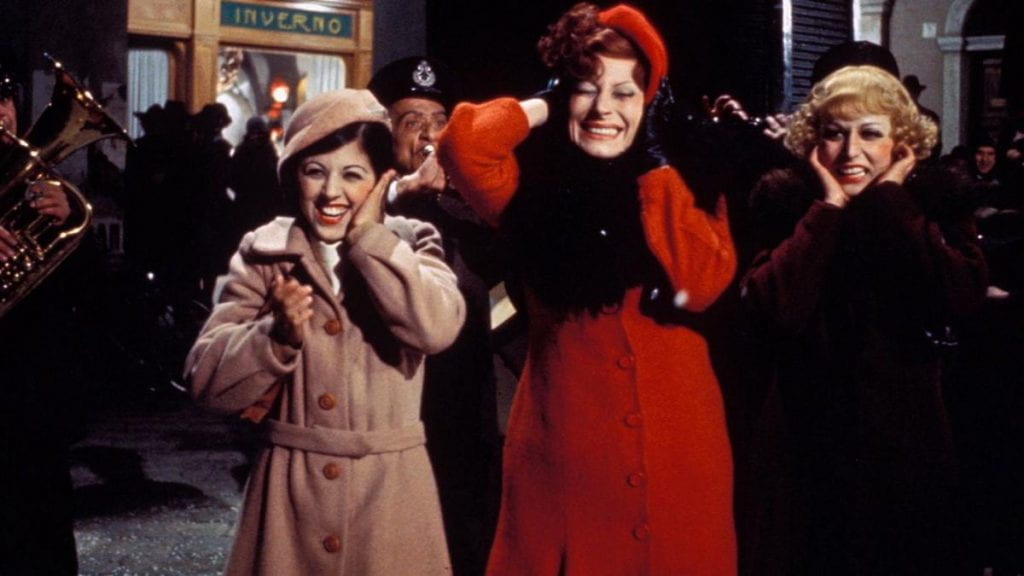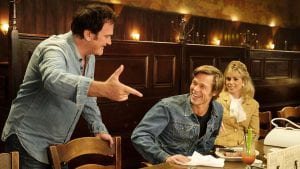
Federico Fellini is famous for inventing the “self-portrait” genre of filmmaking. His 1961 masterpiece 8 ½, which is about a director modeled on Fellini himself, led other filmmakers to make films about themselves. Examples include but are not limited to Francois Truffaut’s Day for Night (1973), Bob Fosse’s All That Jazz (1979), and Pedro Almodóvar’s more recent film Pain and Glory (2018). But Fellini deserves credit for creating, or at the very least popularizing, another autobiographical genre of cinema. That genre is the semi-autobiographical childhood memory piece, or “memory piece” for short.
Fellini established this genre with Amarcord (1973), the winner of the 1975 Academy Award for Best Foreign Film and the most beloved work of the latter portion of his career as a director. The title, which comes from the dialect of Fellini’s hometown of Rimini, means “I remember.” It’s a fitting one then for a film that is very much a collection of dramatized memories from the period of Fellini’s life when he grew up under Fascism in 1930s Italy. Even if you did not know that Fellini based this film on his own life, or what “amarcord” means in English, the bright colors and narrative motif of characters telling stories give you the sense that you’re experiencing someone giving their childhood memories new life by turning them into indelible narratives.

Today Amarcord is “one of [Fellini’s] most beloved pictures,” in the words of Martin Scorsese, who also noted that it is one of director Hou Hsiao-hsien’s favorite films. Whenever I think about how loved it is, I remember when I took a class on Fellini’s work at IU, taught by the incomparable Antonio Vitti. Every week, we would have a screening of one of Fellini’s films. In the first couple of weeks, a married couple of retired Italian academics who were friends of Professor Vitti would come and watch the films with us. At a certain point, they stopped coming. But they returned to see Amarcord, which I am pretty sure was their favorite.
While this film continues to enchant people who watch it (even though some may find it too vulgar or dislike how it treats its female characters), Amarcord deserves to be known for creating space for filmmakers to explore their own childhoods in the realm of cinema. Alfonso Cuarón’s film Roma took a similar approach to portraying the director’s childhood by marginalizing his own perspective (the characters based on Fellini and Cuarón are supporting characters at best), as well as employing a relatively loose narrative. Quentin Tarantino took a similar approach to Fellini in creating a realistic yet somewhat mythic sense of place when recreating the 1969 Los Angeles of his childhood memories in Once Upon a Time… in Hollywood, which he referred to as a “memory piece” similar to Roma. Recent news that Steven Spielberg is directing a film loosely based on his own childhood suggests that this genre, much like the popularity of Amarcord, will endure for some time to come.
On April 20 at 7 pm, join IU Cinema for a virtual introduction and screening of Amarcord, which was programmed by IU President Michael A. McRobbie as part of the President’s Choice series.

Jesse Pasternack is a graduate of Indiana University. During his time at IU, Jesse was the co-president of the Indiana Student Cinema Guild. He also wrote about film, television, and pop culture for the Indiana Daily Student. Jesse has been a moderator at Michael Moore’s Traverse City Film Festival and is a friend of the Doug Loves Movies podcast. An aspiring professional writer-director, his own film work has appeared at Campus Movie Fest and the Anthology Film Archives in New York City.

